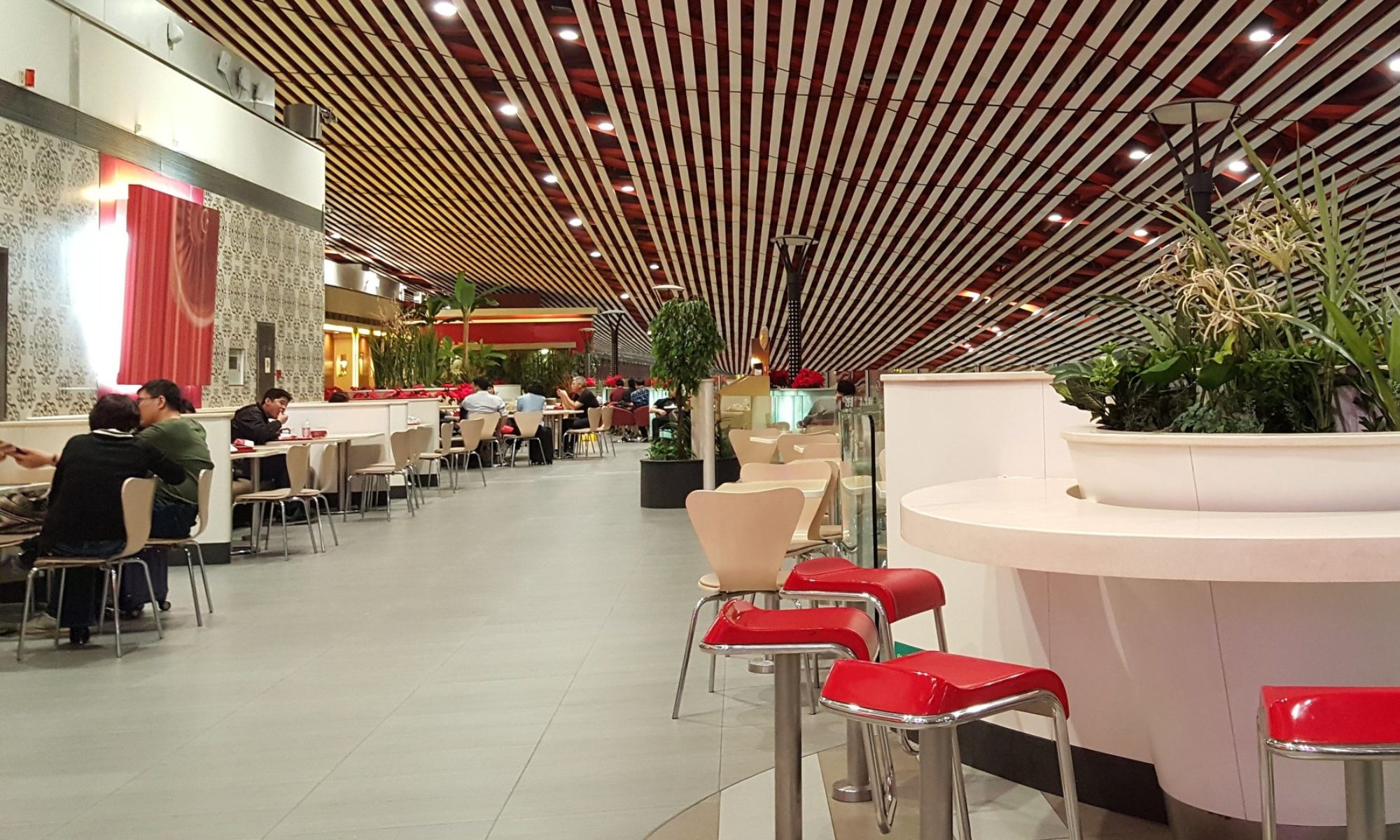Recently, the Federal Airports Authority of Nigeria (FAAN) has continued to drive the nation’s airports to success through robust engagements with critical airport stakeholders to ensure that its mandates are continually being delivered to the general public. Globally, airport management is always very challenging in terms of administration, turning it into a hub and ultimately, making it profitable for patronising airlines who fly into and out of the terminal. Lack of critical infrastructure; patronage and political factors are also some of the issues responsible for the under-utilisation of some of the airports, particularly in Nigeria. For these reasons, it has been very difficult for airport managers in the country as most of them are not viable in terms of positive and optimal contributions to the nation’s economy.
Port Harcourt International Airport Port Harcourt International Airport is one of the few airports that are viable in the country. In 2009, the airport served 1,081,587 passengers, making it the third-busiest airport in Nigeria.
With the recent commissioning of the new International terminal by the President Buhari on October 25 2018, stakeholders are of the view that the new status would boost the handling capacity of the airport. The position of stakeholders is that with a super infrastructure, there would be an increased patronage; more airlines would come and that will definitely boost passengers’ traffic. When the passenger traffic is high, it would also trickle down on the economic situation of the place where the airport is located and sometimes may turn it into an economic hub. Including the Port Harcourt Airport, only four out of the over 25 domestic and international airports in the country are viable, which amounts to a meagre 16 per cent of the total number of airports across the country.
The four airports considered to be viable airports are Murtala Mohammed International Airport, (MMIA) Lagos; Mallam Aminu Kano International Airport (MAKIA) Kano, Nnamdi Azikiwe International Airport (NAIA) Abuja and Port Harcourt International Airport (PHIA), Port Harcourt while others are not rated as viable airports.
Speaking at the commissioning of the PHIA, Buhari said government is making deliberate efforts to increase handling capacities and infrastructure of the nation’s transport sector which was not taken care of since the ‘70s and ‘80s when they were built. Stating that it was part of his promises to upgrade Nigeria’s transport infrastructure in all geo political zones of the country, the president assured that the commissioning was a significant landmark for international travellers especially those in the South-South region. Not much was done after these airports were built-in the 70s and 80s to increase handling capacity of the airports and so we needed to take decisive steps to ensure that our terminals meet the minimum international global standards. The President said “In the 2017 budget, I promised to upgrade Nigeria’s transport and complete a number of projects that will be beneficial to the nation economically and these include construction of new terminals, railways and power projects”. Following the large increase in the national population, with a consequent surge in air passenger traffic, Buhari noted that the capacity of the airport terminals became woefully inadequate to cater for the increase in passenger traffic.
Although, palliative measures were periodically carried out, he pointed out that the facilities were fast giving-in to the effects of wear and tear. It, therefore, became necessary to take decisive action to ensure our terminals meet minimum international standards for the travelling public. “The federal government responded to a global trend in which aviation became a catalyst for economic growth as a result of massive and speedy movement of persons, goods and services in a safe and secure manner.
As part of the infrastructure renewal programme, the construction of four new international terminals at Abuja, Lagos, Port Harcourt and Kano airports was embarked upon by the Federal Government, with a view to modernising the ageing airport infrastructure to meet global aviation standards and improved service delivery in tandem with best international practices. “At the presentation of the 2017 Budget to the National Assembly, I promised to upgrade and develop Nigeria’s transport, power and health infrastructure, and complete a number of stalled infrastructure projects. These include construction of new terminals at the country’s five major airports; numerous major road projects; key power transmission projects; and the completion of the Kaduna – Abuja as well as Itakpe to Warri Railway lines” the president stated. He added that Nigeria having an advantageous central location within the sub-region and our desire to develop into a regional air transportation hub, must upgrade its facilities to take advantage of its assets, adding that the recent decision by the Federal Government to remove Value Added Tax from domestic air transportation is in line with global best practices. Nnamdi Azikiwe International Airport In December last year, President, Buhari also commissioned the newly built international terminal at the Nnamdi Azikiwe International Airport, Abuja. The terminal is said to be the biggest in West Africa and it has the capacity to process at least 15 million passengers annually. The terminal is one out of the four being built by a $500 million loan facility from China EXIM Bank with a $100 million counterpart funding from Nigeria. While commissioning the facility, the President said the federal government was committed to making Nigeria an aviation hub. He also said Nigeria is making huge successes in infrastructure development, adding that he was happy about the progress made in infrastructure development in the maritime sector. Economic Impact With ASKY starting operations from the Nnamdi Azikiwe International Airport (NAIA), Abuja and Lufthansa set to commence from Port Harcourt International Airport (PHIA), Omagwa in no distant time, two of the four terminals are being put to use. Already, with the facility on ground at both PHIA and NAIA, stakeholders and government are expecting more airlines to indicate interest in flying to those airports especially the Port Harcourt Airport that has had a lull of activities since the decline in the oil and gas sectors. However, despite the slowdown of activities in Port Harcourt (PH), all the terminals still require more people to run them, according to the Managing Director of FAAN, Engr. Saleh Dunoma who was quoted to have stated that, with two of the four terminals commissioned and ready for use, it will create employment for deserving Nigerians. “The Chinese terminals was funded by the federal government and the ChinaExim Bank loan. So now we have commissioned two as I speak to you. I need more staff to run those terminals. “We are looking for more people, so it has created an opportunity for us to employ. So the unions are very happy because right now I am short of staff to run those terminals. We are not closing down the whole terminals, we are running them. So we are looking for more people to employ because of the additional capacity we have created in terms of infrastructure,” Dunoma said.
2-Year Airport Outlook
In the last three years, starting from 2017 to 2018, FAAN has made series of breakthroughs in airport management in Nigeria. First was the successes recorded in the International Civil Aviation Organisation (ICAO) Safety Regulations and Systems Successful ICAO Security Audit and ICAO Universal Safety Oversight Audit in good grades, achieving a record 96 per cent mark. Apart from the completion and commissioning of a world class, brand new international terminal at the Nnamdi Azikiwe International Airport, Abuja and also completion and commissioning of the new international terminal at the Port Harcourt International Airport, Omagwa, FAAN successfully hosted the 59th Airports Council International Africa Regional Conference and Exhibitions last year. Nnamdi Azikiwe International Airport, Abuja was adjudged the best Airport in Safety for the year 2018 by Airport Council International, Africa Region. There was also designation of FAANs training centre as an ICAO/ACI training centre towards the end of 2018. Reports have also shown that over 500 Aviation Security and Airports Rescue and Fire Fighting Officers were recruited to address shortage of manpower and ageing work force while key operational officers, especially from Aviation Security, Fire and Safety Departments were trained both locally and internationally, with a view to enhancing operational efficiency at the airports. Within the period under review, there were other airport development projects which took place, including: reconstruction of Abuja Airport Runway in record time of six weeks; facility upgrade of Kaduna Airport, prompting the upgrade of the airport to Category Nine (CAT 9) and weekly international operations from the airport and successful linking of Abuja Airport to the railway line to boost economic activities. There was also the construction of an ultra-modern five story car park in Murtala Muhammed International Airport, Lagos, a project that was completed and commissioned for use in 2017. Within these years, FAAN had equally improved the airport security architecture which is expected to contain emerging airport security challenges. Other areas FAAN had made efforts include: discussions on Public Private Partnership (PPP) mechanism to inject new life into our airports, cargo aprons, airlifting of pilgrims to holy land, provision and maintenance of general airport infrastructure and full implementation of the Federal Governments Executive Order on Ease of Doing Business to drive efficiency and self-sustainability. In addition, FAAN fully commenced the process of migrating to a brand new Independent Power Source, with the acquisition of six Brand New Industrial Generators, with a total capacity of 29.1 MVA from Caterpillar and the commissioning for use of the generators at the Murtala Muhammed Airport, Lagos, resolving the power challenges at the airport in the process. The managing director of FAAN, Engr Saleh Dunoma was also elected the President of Airports Council International (ACI) Africa, with the responsibility to coordinate and ensure the entrenchment of safety and security as core values in airport organisations in Africa. Airport Certification As part of ways to improve on safety, FAAN in 2018 got certification of the Murtala Muhammed Airport, Lagos and collection of Aerodrome Certificate of Safety for the airport. The agency also got certification of the Nnamdi Azikiwe International Airport, Abuja and collection of Aerodrome Certificate of Safety for the Airport. Commenting on the certification, director-general, Captain Usman Mukhtar had said, that the Certification process is carried out on the international airports to make sure they meet ICAO standards. “Getting the certification is a big deal, but sustaining the standard is what matters and that is what FAAN will have to contend with because in truth, the NCAA will not certify an airport that is not up to standard seeing that whatever we do is subject to ICAO ratification so it’s not going to happen that we will certify an airport that is sub-standard”. The certification of the NAIA after that of MMA brings to two, the number of certified international airports in Nigeria as the current Minister of State, Aviation, Senator Hadi Sirika had earlier promised after assumption of office, that this administration would ensure that all airports are certified.
Source: Leadership. Nigeria






